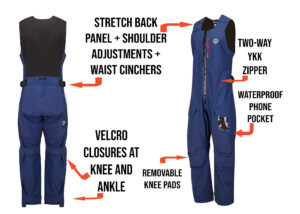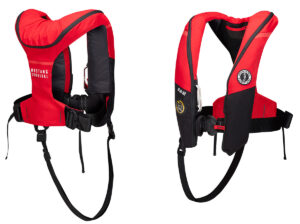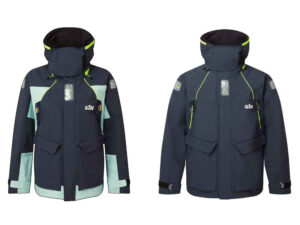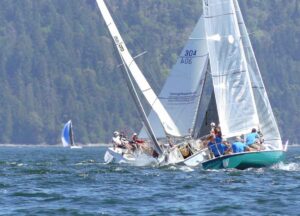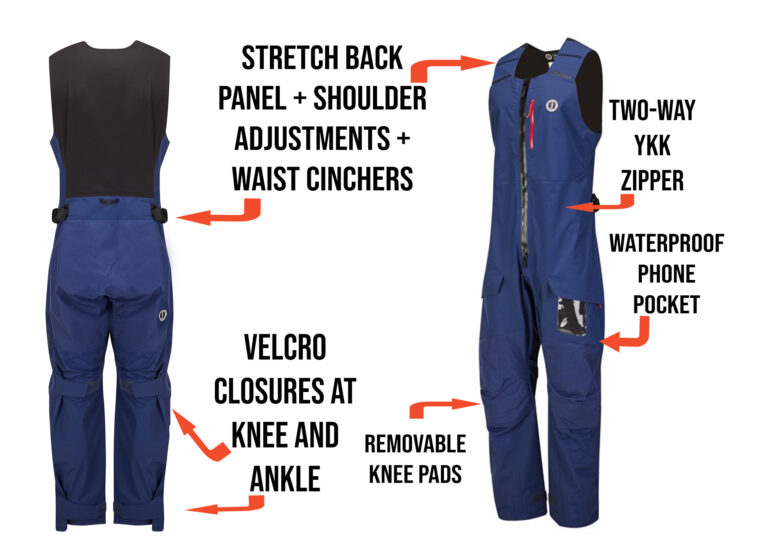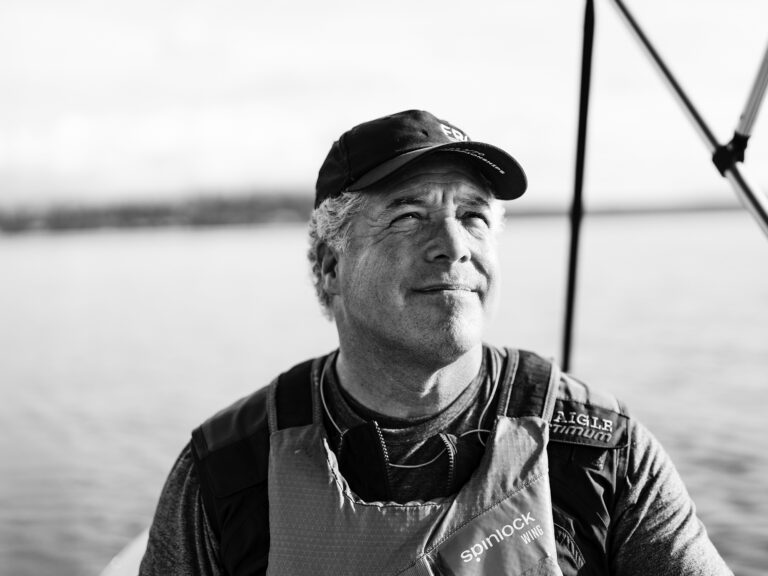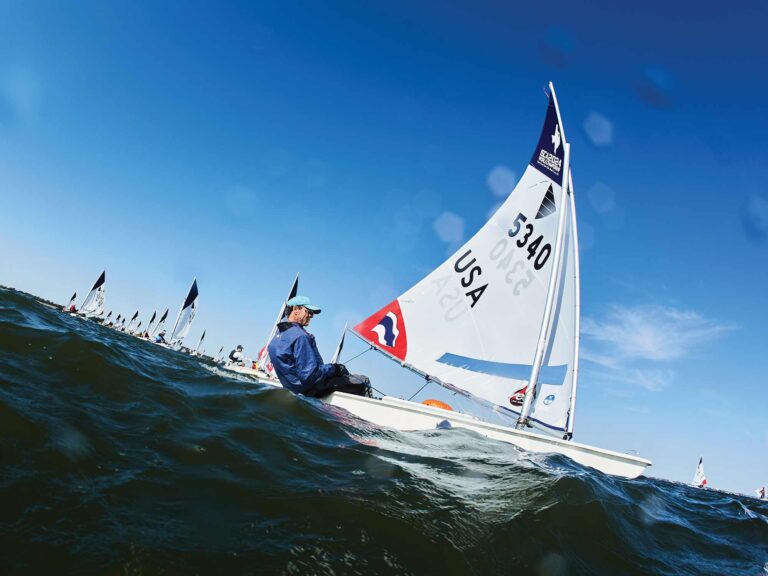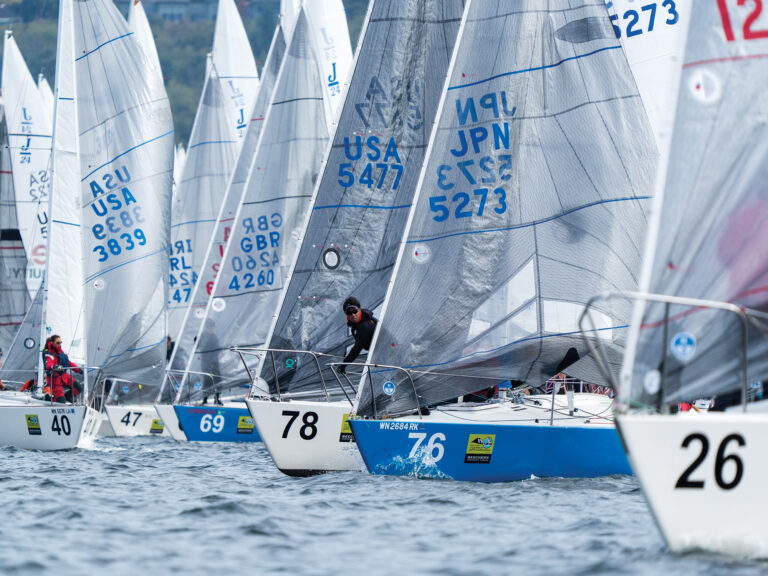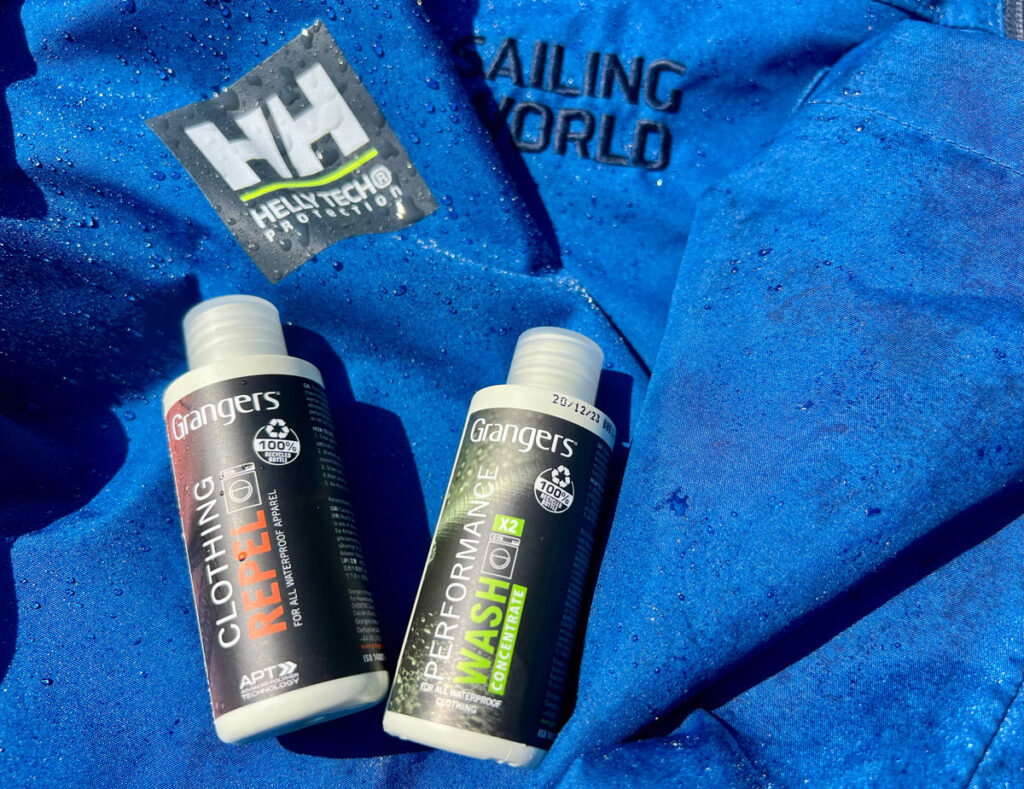
Racing sailors will collectively spend hours washing down a boat after racing, leaving it gleaming and spotless for the next race day, but when it comes to foul weather gear, it’s typically tossed below, salt-crusted and dirty. It’s true that our wet weather gear rarely gets the attention it deserves, and when, or if, it does eventually stop keeping us dry, there’s a pretty good chance blame goes to our care, not to the gear itself. But not to worry, there’s an easy fix.
“I think back a long time ago people would just wear gear for a while and not really look after it that much,” says Kate Morrison, head of marketing and product development for Rooster, a sailing apparel company based in the UK. “But now, it’s more important than ever to wash your gear after every use.”
The heightened importance of caring for your waterproof gear today is the result of banned PFAS (Per- and polyfluoroalkyl) substances that are considered harmful to public health and the environment. These PFAS chemicals are widely used, and in the past, they were used for “Durable Water Repellents” that were the first and essential barrier of the fabric. This coating, which makes water droplets bead up and roll off before they can saturate the fabric is essential to effectiveness of our waterproof gear. Once the outer layer of a laminate is saturated, the whole “breathable” fabric system essentially stops working.
The PFAS ban has been a major and ongoing challenge for all gear and clothing manufactures. Current alternatives are not as effective, which puts an even greater importance on foul-weather gear preservation.
“If you don’t clean out the salt and the grime that gets in the surface of the fabric, it will degrade and become less waterproof,” Morrison says. It’s as simple as that.
Rooster has used PFC-free treatments on its gear for the last four years. Today, many of its products use the company’s Aquafleece fabric, which is a polyurethane-bonded polyester fleece. Because the fabric is like a polyurethane laminate, it doesn’t need any PFC coatings required for most DWR treatments. “[PFC-free treatments are] better for the environment, but obviously it comes with its implications,” Morrison says. “[New gear] does need reproofing more quickly, which people don’t understand. If you bought a jacket 30 years ago, it’s still waterproof and going to last a lot longer than buying a new jacket now.”
Morrison says that customers have expressed frustrations with buying expensive waterproof jackets and then having to clean and maintain them properly to keep the effect. Because of this, she emphasizes that it’s more important now for users to be vigilant about maintaining the DWR finish of their foul weather gear. She suggests washing lightly used gear every 20 to 30 days of use. For sailors heavily using their clothing in more extreme conditions, she recommends washing for every 10 to 12 days of use. “You should rinse it with water every time to get the surface grime off,” Morrison says, “but it should be washed properly with either a reproofing wash or a performance [wash].”
Re-waterproofing Is Essential
While Rooster and several other manufacturers recommend using Grangers waterproofing products for its DWR clothing, another PFC-free option available in the US is Nikwax. Nikwax offers many products for cleaning and re-waterproofing clothing, footwear and equipment. For cleaning and re-waterproofing outerwear like rain jackets and pants, the company recommends using its Tech Wash to clean, and applying TX.Direct to re-waterproof.
Tech Wash is used in the washing machine in place of household detergent, which is harmful to waterproof clothing. Tech Wash is simply added with foul weather gear washed with a normal cycle.
TX.Direct is applied via a wash-in formula used in the washing machine during a second cleaning cycle with Tech Wash. Nikwax also offers a spray-on formula which is applied to a clean, wet item. After washing with Tech Wash, the Nikwax spray can be applied evenly with TX.Direct, hang dried or placed in the dryer with a low heat setting.
These waterproof coatings are durable, but not permanent and they can wear off over time, experts say. So, if you wash your gear properly and it still does not repel water, then it’s time to re-waterproof. One helpful tip is to completely wash and reproof your gear at the end of the season so it’s ready to go when the boat call comes.
The experts at Grangers tell us to reproofing our gear separately and simply pour its repel treatment directly into the detergent drawer of the washing machine. Wash on a full cycle at with warm water (or according to care label instructions) and tumble dry. The gear can be air dried, but the recommend a small about of heat to really set the protection into the fabric.
So, if you want to get the best waterproofness and breathability for the life of your foul weather gear, remember to race, rinse, repel, and repeat regularly.

